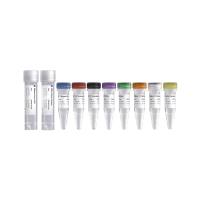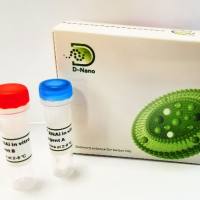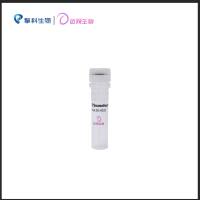赶超RNAi的基因沉默技术? [zt from dnathink]
丁香园论坛
1226
The Scientist-September 23,2003-Fingering single genes-Cathy Holding
The ability to control in vivo gene expression may be a powerful tool in cancer therapy, gene therapy of inherited genetic diseases, and for the study of gene function. Small interfering RNAs are increasingly used in the study of the effects of gene knockout, but these molecules may be of limited therapeutic use in the clinical setting. In the September 26 PNAS, Siyuan Tan and colleagues at Sangamo BioSciences, Inc. report the successful use of an engineered zinc finger transcription factor to completely inhibit specific single gene expression in vivo, providing a model for the modulation of gene expression that would be of use in both therapeutic and research environments.
Tan et al. built upon previous research that linked three two–zinc-finger domains in an engineered transcription factor to provide specific binding to a unique 18-bp region in the promoter of the checkpoint kinase 2 (CHK2) gene. This sequence was combined with a maltose-binding protein DNA for affinity purification of the expressed protein, and the engineered DNA was incorporated into a repression domain construct for transient expression studies in cell lines or into a self-inactivating retroviral vector for production of stable cell lines. Expression of the zinc-finger protein transcription factor (ZFP-TF) was monitored by reverse transcriptase polymerase chain reaction, microarray analysis, or Western blotting. The authors observed that abolition of expression of CHK2 was complete and specific by these three criteria and that expression of the ZFP-TF was constitutive and stable.
"The potential therapeutic utility of ZFP TFs stems in part from the exquisite specificity of the ZFP DNA-binding domain… This specificity, when combined with the potent yet reversible effects of the functional domain, will be key to the success of these reagents in the clinic… Taken together, these data show that ZFP TFs can functionally repress target genes in untransformed human cells. ZFP TFs, that can activate or repress the expression of any gene are poised to emerge as direct therapeutic interventions with potential application to the entire spectrum of disease related gene targets," the authors conclude.
http://www.biomedcentral.com/news/20030923/03
http://www.pnas.org/cgi/reprint/2035056100v1.pdf
发表于 Wednesday, September 24 @ 00:00:00 CST 由 admin
The ability to control in vivo gene expression may be a powerful tool in cancer therapy, gene therapy of inherited genetic diseases, and for the study of gene function. Small interfering RNAs are increasingly used in the study of the effects of gene knockout, but these molecules may be of limited therapeutic use in the clinical setting. In the September 26 PNAS, Siyuan Tan and colleagues at Sangamo BioSciences, Inc. report the successful use of an engineered zinc finger transcription factor to completely inhibit specific single gene expression in vivo, providing a model for the modulation of gene expression that would be of use in both therapeutic and research environments.
Tan et al. built upon previous research that linked three two–zinc-finger domains in an engineered transcription factor to provide specific binding to a unique 18-bp region in the promoter of the checkpoint kinase 2 (CHK2) gene. This sequence was combined with a maltose-binding protein DNA for affinity purification of the expressed protein, and the engineered DNA was incorporated into a repression domain construct for transient expression studies in cell lines or into a self-inactivating retroviral vector for production of stable cell lines. Expression of the zinc-finger protein transcription factor (ZFP-TF) was monitored by reverse transcriptase polymerase chain reaction, microarray analysis, or Western blotting. The authors observed that abolition of expression of CHK2 was complete and specific by these three criteria and that expression of the ZFP-TF was constitutive and stable.
"The potential therapeutic utility of ZFP TFs stems in part from the exquisite specificity of the ZFP DNA-binding domain… This specificity, when combined with the potent yet reversible effects of the functional domain, will be key to the success of these reagents in the clinic… Taken together, these data show that ZFP TFs can functionally repress target genes in untransformed human cells. ZFP TFs, that can activate or repress the expression of any gene are poised to emerge as direct therapeutic interventions with potential application to the entire spectrum of disease related gene targets," the authors conclude.
http://www.biomedcentral.com/news/20030923/03
http://www.pnas.org/cgi/reprint/2035056100v1.pdf
发表于 Wednesday, September 24 @ 00:00:00 CST 由 admin









